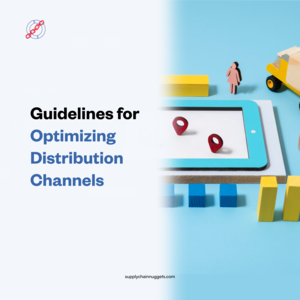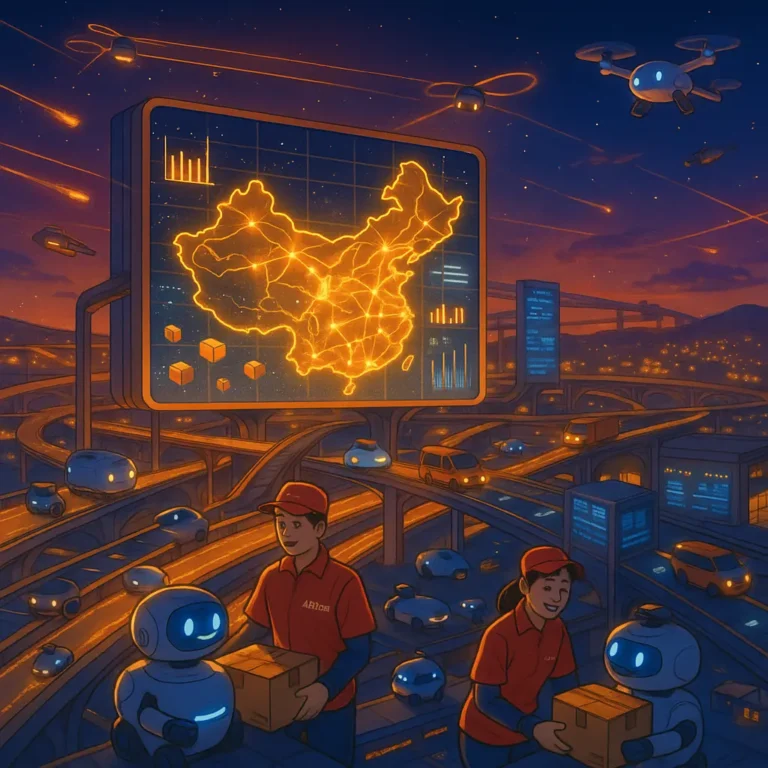
Distribution channels play a huge role in getting products to the consumer; optimizing them is critical to any business or supply chain . As a business owner or manufacturer, a well-functioning distribution channel is vital to your business.
In the business world, distribution channels are the veins that carry success to the heart of the market.
What are Distribution Channels?
You may define distribution channels as avenues through which a business transports or delivers finished goods and services to the end user.
Consumers tend not to tolerate disappointments or late delivery from businesses. 69% of consumers are less likely to patronize your business because of late deliveries.
You can imagine what your business stands to lose from poor distribution channels.
Why Worry About Optimizing Distribution Channels?
As mentioned earlier, distribution channels are avenues for delivering finished products to end users. However, much more than that, they serve as the last vehicle between a business and its consumers.
Consumers are the lifeblood of any business, and keeping them happy and feeling important is the least you or your business can do to maintain a competitive edge.
Apart from maintaining a competitive edge, you also want to make money while delivering your goods and charging end users the optimal amount.
A poorly functioning distribution channel is not just inefficient; it also costs a lot of money and isn’t would only slow down your business.
Why is Optimizing Your Distribution Channels Important?
No matter how great your product is, it must penetrate the market to succeed. However, it won’t do this by sitting on the shelf.
Even after a great marketing campaign. This is where distribution channels come in.
Market Reach: Your product and your clients are connected by distribution networks.
They increase your market size and ensure more people can buy your stuff.
Efficiency: The procedure is streamlined.
An effective distribution channel guarantees that your product reaches the client promptly and in the best possible condition from warehousing through delivery.
Consumer convenience: Channels like e-commerce platforms offer convenience for the customer.
Customers can shop from the convenience of their homes, compare products, and make purchases.
Cost-Effective: Using established channels can be less expensive than starting from scratch when creating your distribution network.
You can scale without making significant infrastructure investments, thanks to it.
Expertise: Channel partners frequently possess extensive industry knowledge.
They are knowledgeable about their industry and can successfully position your product.
Factors that Play a Role When Optimizing Your Distribution Channels
Distribution channels differ from business to business. You may pick your business distribution channel based on several factors, such as:
- Cost
- Speed
- Policies
- Consumer behaviours
- Product characteristics
Any factor or a combination of them may inform your decision on the right distribution channel for your business.
Types of Distribution Channels
There are five types of distribution channels. They are
Direct Distribution Channels
This is when the product is sent straight to the consumer from the business.
The products are perishable, expensive, or localized for any particular demography in this distribution channel.
In a direct distribution channel, you have direct control over the product delivery, and because of that, you can easily tweak it to improve productivity.
Indirect Distribution Channels
With this distribution channel, you do not have the same control over your product delivery as in the direct distribution channel.
In the indirect distribution channel, many intermediaries exist between your business and the consumers. Hence, lower control.
Although this distribution channel may seem challenging because of all the intermediaries, if their relationship is good, it can run like clockwork and become advantageous to your business.
Exclusive distribution channels
In this type of distribution channel, a manufacturer or business sells the product exclusively to a distributor, and it is on that distributor to sell to the consumers.
The danger of this distribution channel is that it tends to trick manufacturers or businesses into thinking that the distributor is their sole customer, which could not be further from the truth.
Intensive Distribution Channels
This distribution channel works best for businesses selling everyday products who wish to see their products in as many locations as possible.
The general driving principles here are brand awareness and taking advantage of human’s impulse purchasing nature.
While this strategy has its advantages, it could cost your business a lot of loss if you do not manage where your products are located and assess the market trends properly.
Selective Distribution Channel
This type of distribution is favoured majorly by premium brands.
In this type of distribution channel, you engage a few outlets and cut deals with them such that they focus on selling just your products.
It is the opposite of the selective distribution channel.
Four Strategies for Optimizing Distribution Channels Efficiency
Efficiency is the increase of productivity while maintaining or reducing time and effort. In 2023 and beyond, efficiency is proving more important than ever to businesses worldwide.
Your distribution channel serves as the bridge between your business and your consumers. Making your distribution channels as efficient as possible only favors your business and your bottom line.
1. Identify the distribution channel that works for your business or product
As mentioned earlier, several factors determine the ideal distribution channel for your business or product.
Your current distribution channel may not be ideal, and because of that could lead to poor delivery time, which in turn impacts your business negatively.
Picking the right distribution is a big step in optimizing efficiency because it gives your product the best possible route to reach consumers in the best possible time.
2. Apply tech tools
Technology has become a big part of the business world today. Every day it seems tech tools and software that make running a business easy are released.
One such tool is distribution management software (DMS). The DMS reduces the complexity of order sorting and delivery while enhancing the omnichannel customer experience.
Another tech tool that could help when optimizing your distribution channels and their efficiency is the warehouse management system (WMS). While similar to the DMS, it optimizes the warehouse by optimizing shipping accuracy. Reducing the stress on the distribution channels.
3. Streamline product movement
The more the product moves, the more complex the distribution becomes, leading to more mistakes.
A product may move significantly because of many intermediaries between your business and the consumer.
While having a lot of intermediaries can be very efficient if they work effectively, when they are not, it becomes a disaster.
To mitigate such disasters, you may consider reducing the movement of the product by reducing the intermediaries involved in getting your products to your consumers.
Another option for streamlining product movement is to optimize the warehouse or skip it in favour of the direct vendor shipment option.
4. Track performance
You can develop a performance tracking metric or system to monitor and evaluate your distribution process’s steps and intermediaries.
With this system, you can identify bottleneck steps or intermediaries responsible for slowing down the distribution process, allowing you to take adequate action.
In this case, adequate action depends on what your report says. You could move to fix a step or eliminate it entirely.
FAQs on Optimizing Distribution Channels
Q1: How do I choose the right distribution channel?
Consider factors like your product type, target market, geographical reach, and your resources. Research potential channels and analyze their fit for your business.
Q2: What are the risks of poor distribution channel management?
Poor management can lead to inventory issues, brand misalignment, or inefficiencies, impacting customer satisfaction and your bottom line.
Q3: Is e-commerce a viable distribution channel for all businesses?
E-commerce can work for many businesses, but not all. It depends on your product, target audience, and competition. Research and strategy are crucial.
Conclusion
Distribution is the last stage of any business’s supply chain, which could make or break the supply chain if not handled well.
In 2023, speed and accuracy mean a lot to consumers, and optimizing your distribution channels the right way could spell tremendous success for your supply chain.

Obinabo Tochukwu Tabansi is a supply chain digital writer (Content writer & Ghostwriter) helping professionals and business owners across Africa learn from real-world supply chain wins and setbacks and apply proven strategies to their own operations. He also crafts social content for logistics and supply chain companies, turning their solutions and insights into engaging posts that drive visibility and trust.







